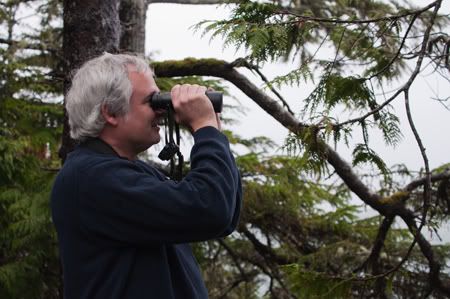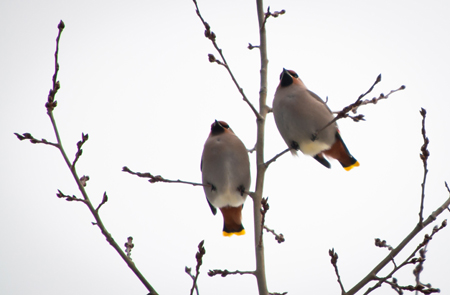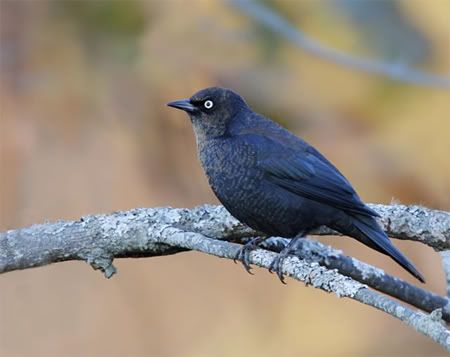
Me (Jeff Wells) looking for birds on the coast of British Columbia during December.
Credit: Valerie Courtois, Canadian Boreal Initiative
It’s that time of year again. No, I’m not talking about that time of year when you start kicking yourself in the butt for straying from your New Year’s resolutions (although it may prove to be an opportune time if you have drifted a bit). It’s the time when you and thousands of other US and Canadian citizens brave the weather and start counting birds for this year’s Great Backyard Bird Count.
From February 18th through the 21st many of us will be stepping outside the comforts of our heated abodes to head to a local birding hotspot to help document bird sightings for this year’s count. Some of us—preferring to capitalize on the technological advancements of modern home design—might simply perch on our favorite couch and peer outside to see if there’s any bird activity happening in our backyards. The truth is that any documented bird activity (provided the birds are wild and the documentation is accurate) is useful to the charitable staff and volunteers who compile the nearly 100,000 checklists submitted each year.
Bohemian Waxwings in Maine:
Not only do the sightings help scientists better understand patterns and bird behavior from year to year, it also provides the opportunity to see some species that you might not typically see most winters. Called “irruptive” years, many bird species will shift their wintering grounds every few years to locations they normally are less abundant in. It varies from bird to bird, however food scarcity (which can be impacted by a variety of things) is a leading factor in most cases.

Bohemian Waxwings, like these found outside our colleague Valerie Courtois’ house in Labrador, can be found outside their traditional range every few years if the situation permits.
Credit: Valerie Courtois, Canadian Boreal Initiative
A recent Associated Press article pointed out that this year many folks are seeing increased numbers of several boreal bird species, and especially this year with seed-feeding birds. In the Northeast US you might see increased numbers of Bohemian Waxwings, Common and Hoary Redpolls, and Pine Grosbeaks, which is what I’ve observed from my neck of the woods in Maine. In the Southeast and parts of the Midwest keep your eye out for Dark-eyed Juncos and White-throated Sparrows. On the West Coast you might find Golden-crowned Sparrows.
Common Redpoll in Maine:
Also, due to its concerning decline, keep a special eye out for Rusty Blackbirds. This species has declined by up to 90% over the past half-century and the information you provide regarding its whereabouts will be particularly useful in preventing it from further decline.

Information about species in decline, such as the Rusty Blackbird, is vital toward understanding how to better protect them.
Credit: Jeff Nadler
I cannot emphasize how important the data folks like you and I collect is to bird conservation. Many reports and conservation assessments experts use today are largely based on the data collected from “citizen scientists”. I highly recommend you take some time—even if it’s only for a half hour—over the weekend to chip in and do your part for helping expand our knowledge of birds. Plus, it should be a blast!
Take part in this year’s Great Backyard Bird Count >
Raw Shots of Bohemian Waxwings:

